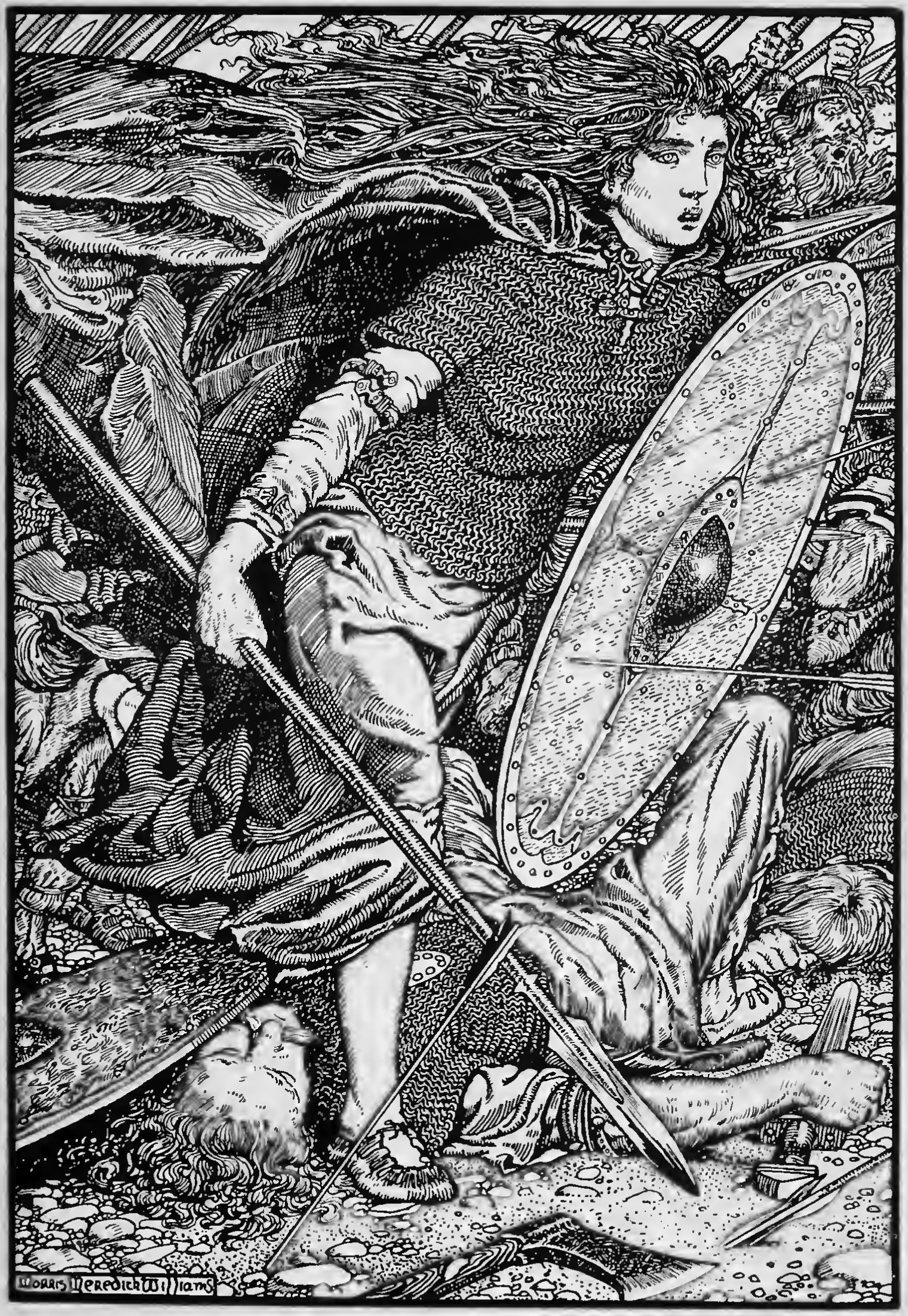The Historical Truth Behind Lagertha
Lagertha is one of the main characters in the Irish-Canadian TV series ‘Vikings’ from History Channel. From all of the main characters (i.e. Ragnar Lothbrok, Rollo, Björn, or Aslaug), she has been the most accurately portrayed in the show (from the historical point of view) thus far. However, there are still certain inaccuracies which stem from the artistic license of the producers and writers of the serial.
According to the legend, Lagertha was a Norwegian Viking shieldmaiden who subsequently married famed Norse chieftain Ragnar Lothbrok. Her life and deeds were recorded by the Danish scholar Saxo Grammaticus (known as Saxo the Grammarist in English) during the 12th century in one of his works entitled ‘Gesta Danorum’ (or ‘The Deeds of the Danes’ in translation). She is particularly remarked in Book IX of the aforementioned medieval manuscript.
It is quite likely that the way Saxo Grammaticus mentioned her in this chapter (namely ‘Lathgertha’) may have been a Latinised form of the Old Norse name ‘Hlaðgerðr’ (Hladgerdr). Additionally, she can be equally found in English language sources under slight variations such as ‘Ladgertha’ or ‘Ladgerda’.

Lagertha played by Canadian actress Katheryn Winnick in History Channel’s ‘Vikings’. Image source: www.fanuru.com
According to ‘Gesta Danorum’, her life as a longtime warrior began at the point when Frø, a semi-legendary Swedish king, invaded early medieval Norway and murdered the Norwegian king of the time by the name Siward. After this, Frø, a tyrant by nature, eventually relocated the women belonging to Siward’s family in a brothel, as a sign of defiance and public humiliation. When Ragnar Lothbrok heard the news about the death of king Siward, he decided to avenge him. As a matter of fact, he and king Siward were believed to have been relatives (with Siward being his grandfather according to a legend).
During the clash in which Lothbrok took part, the women who had been humiliated by Frø dressed themselves in men’s clothing and fought against Frø on behalf of Ragnar. Lagertha was the leader amongst them and played a pivotal part in Frø’s defeat.
Saxo Grammaticus depicted her in his chronicle as a brave amazon ‘who though a maiden, had the courage of a man’. So it was that, after the defeat of Frø, according to the same chronicle written by Saxo Grammaticus, Ragnar, impressed by how boldly she had fought in that fierce battle, sought her hand. She eventually accepted and together they had a son by the name Fridleif (instead of Björn, as scripted in the TV series) as well as two daughters.

Viking Age shieldmaiden Lagertha, as depicted by Morris Meredith Williams in ‘The Northmen in Britain’ (1913) by Eleanor Means Hull, page 17. Image source: Wikimedia Commons
Not long thereafter, Ragnar divorced Lagertha in order to mary Thora Borgarhjört (who was the daughter of the King of Sweden Herraud). Because of this, Lagertha had slain him and ruled over Norway herself, without sharing the throne with her former husband anymore.
There is much debate regarding the historicity of Lagertha (as well as regarding the other characters from ‘Gesta Danorum’) to as how real was she during the Viking Age. Some historians claim that Lagertha is a fictional character, others that she must have been a certain woman by the name Thorgerd who is described in other early medieval chronicles of the 6th century.
Documentation sources and external links:
- Better to Rule Alone: Lagertha on www.hubpages.com
- Lagertha: The Real Shieldmaiden on www.normandescendants.org
- Lagertha on www.wikipedia.org (in English)
- The Danish History/Book IX on www.en.wikisource.org (in English)
- Women in the Viking Age by Judith Jesch on Google Books (in English)
- Viking Warrior Women: Did ‘Shieldmaidens’ Like Lagertha Really Exist? on www.tor.com
- The Voluspá, The Sibyl’s Lay in the Edda of Sæmund on www.northvegr.org




I love the history of all the Viking kings & queens. This is part of my history. I would love to know more than I do.
She is one of my favorite characters in this show. I was glad to learn of the bravery of the woman from this period of time.
[…] The historical truth behind Lagertha. […]
the vikings also settled an area in what is today called Russia and the name Russia comes from the word Rus, meaning rower
because the that is what the vikings were known for in the area settled. what was the language of those people living in Rus back then? thank you
“Rower”? I thought “rus” meant “red” in reference to the Vikings hair color.
DNA findings are showing light hair was not common and while it existed in some areas many “Vikings” were dark haired and dark eyed too. The legend of the blonde or red hair comes from the middle eastern writers at the time who crossed paths with them as traders in places like Constantinople. It’s not to say it didn’t exist in part of the population more often in Sweden but to belive that almost all were light haired and blue eyed is a falicy. I
Vikings according to facts came from the ancient Greek family tree. The first to arrive in iceland were Greeks, then the people from Scandinavia. In Russia the Cyrillic language was taught by a greek monk Cyril from thessaloniki. If you put the pieces together you can get a better understanding.
I think you skipped one of the most interesting parts when you said ‘Ragnar proposed and eventually she agreed.’ Wasnt he chased off by a bear the first time she said no?
There are many graves of warrior women all over Denmark and Sweden even in England in Repton in Derbyshire skal
Thank you for your readership and for your time on The Dockyards as well as for this comment, Robert! Indeed, you are right, this is true as per my knowledge as well, excluding England, that is, until now. Skål til England! 🙂